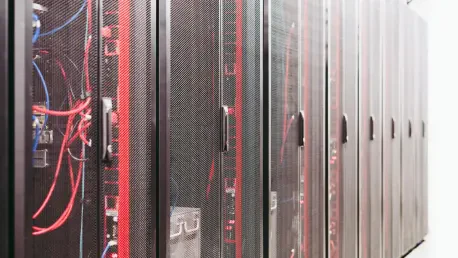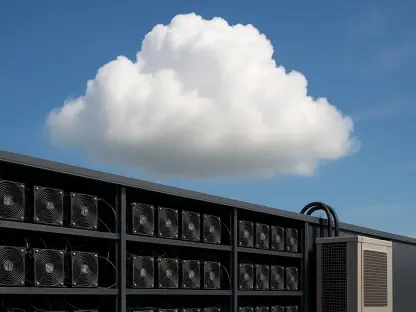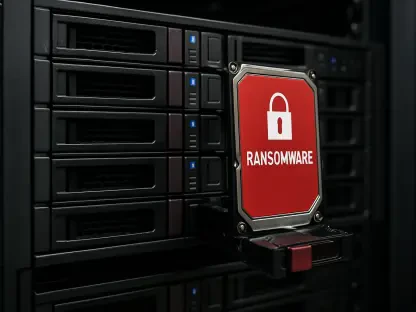Finland’s recent policy shift to eliminate electricity tax breaks for data centers has sent ripples through the tech industry, raising critical questions about the nation’s future as a global hub for digital infrastructure. Announced in March of this year, the decision will increase the electricity tax rate for these facilities from a subsidized 0.05 cents per kilowatt-hour (kWh) to the standard 2.24 cents per kWh, a substantial jump that could reshape investment decisions. Known for its cool climate, access to renewable energy, and strong digital framework, Finland has long been an attractive destination for major tech firms. However, with operational costs set to rise, there’s growing uncertainty about whether the country can maintain its competitive edge. This policy change comes at a time when demand for data centers is surging due to advancements in AI and cloud computing, making the stakes even higher. This article explores the multifaceted impacts of this tax adjustment, delving into economic, environmental, and competitive dimensions to assess its potential to hinder tech investment in Finland.
A Shift in Financial Incentives
The decision to abolish electricity tax breaks marks a significant departure from a policy that has been in place since 2014, offering substantial savings to data centers with capacities exceeding five megawatts. This incentive, costing the government approximately €30 million each year, played a pivotal role in drawing industry giants to Finland’s shores, bolstering its reputation as a tech-friendly nation with low energy costs and reliable infrastructure. The reversal, however, has triggered immediate concern among stakeholders. For instance, XTX Markets, which had planned a €1 billion investment in a new data center complex, is now reassessing its strategy, as highlighted by COO Michael Irwin in a statement on August 11 of this year. Such hesitancy signals a broader risk that other firms might follow suit, potentially stalling projects that are vital to Finland’s digital economy. The loss of this financial cushion could deter both new entrants and existing operators from expanding, raising doubts about the country’s ability to sustain its appeal in a highly competitive global market.
This policy shift also underscores the unpredictability of fiscal incentives in shaping long-term business decisions. Data center operations are capital-intensive, often requiring years of planning and significant upfront investments. The sudden increase in electricity taxes disrupts the cost-benefit calculations that companies rely on when choosing locations. Beyond individual firms, the ripple effect could impact Finland’s broader tech ecosystem, which has benefited from the clustering of innovative enterprises around these facilities. Suppliers, service providers, and ancillary businesses that support data centers may face reduced demand if major projects are delayed or relocated. While Finland’s natural advantages, such as its climate and energy resources, remain strong draws, the absence of tax breaks might push some investors to explore alternative destinations with more favorable economic conditions, challenging the nation’s position as a leader in this sector.
Economic Consequences Beyond the Balance Sheet
The financial implications of higher taxes extend far beyond the immediate burden on data center operators, threatening to undermine significant economic benefits tied to the industry. These facilities are not just technological assets; they are engines of growth, creating jobs and fostering skill development in local communities. From direct employment to internships and partnerships with educational institutions, data centers contribute to building a workforce equipped for the demands of the digital age. However, with operational costs set to climb, there’s a tangible risk that new projects could be shelved and existing expansions curtailed. Critics of the policy argue that such outcomes would diminish these economic advantages, leaving Finland with a gap between the soaring demand for digital infrastructure and its capacity to deliver. This could hinder progress in critical areas like AI and cloud computing, where robust data processing capabilities are essential for innovation and global competitiveness.
Moreover, the potential reduction in data center activity could have a cascading effect on related sectors that rely on the industry’s presence. Construction firms, energy providers, and technology vendors often see increased business when data centers are built or expanded, contributing to a vibrant economic cycle. If investment slows, these secondary benefits may also decline, impacting regional economies that have come to depend on the tech sector’s growth. Additionally, Finland risks losing the opportunity to capitalize on the global surge in demand for data storage and processing, a trend driven by the proliferation of digital services and smart technologies. While the country’s infrastructure remains world-class, the higher cost of doing business might deter firms that prioritize short-term savings over long-term strategic advantages, potentially redirecting billions in investment to other nations with more accommodating policies.
Energy Sustainability Versus Tech Ambitions
At the heart of this policy change lies a critical tension between fostering technological growth and ensuring energy sustainability, a challenge that Finland is not facing alone. The decision to end tax breaks aligns with a wider European trend of prioritizing grid stability and environmental goals over unchecked expansion of energy-intensive industries. In southern Finland, the rapid rise in data center energy consumption has already strained the national grid, prompting Fingrid, the country’s electricity transmission operator, to impose restrictions on new connections until 2027. This move reflects a growing recognition that the unchecked proliferation of data centers could jeopardize energy security and hinder progress toward carbon neutrality. While the policy aims to address these pressing concerns, it raises the question of whether Finland can maintain its ambitious tech goals without overtaxing its resources or compromising its environmental commitments.
This balancing act is further complicated by the unique demands of data centers, which require vast amounts of electricity to operate servers and maintain cooling systems. Although Finland boasts access to renewable energy sources, the sheer scale of consumption from these facilities can outpace supply, especially in densely populated or industrially active regions. The government’s push to eliminate subsidies is seen by some as a necessary step to encourage operators to adopt more energy-efficient practices or invest in sustainable technologies. However, opponents argue that without financial incentives to offset initial costs, such transitions may be slow, potentially stifling innovation rather than spurring it. As Finland navigates this complex landscape, the challenge lies in crafting policies that support both environmental responsibility and the infrastructure needed for a digital future, ensuring that neither goal is sacrificed at the expense of the other.
Competitive Lessons from Regional Peers
Examining the experiences of neighboring countries provides valuable insights into how Finland might fare in the wake of its tax policy change. Sweden, for instance, eliminated a similar electricity tax break in 2023 but has continued to see robust growth in its data center market, particularly in Stockholm, driven by access to renewable energy and natural cooling advantages. Similarly, Ireland, despite implementing stringent controls to prioritize sustainability, remains a dominant player with 82 operational data centers recorded as of April this year. These examples suggest that while fiscal incentives are important, other factors such as climate, infrastructure, and regulatory stability can sustain industry growth even when tax benefits are reduced. For Finland, this indicates that the loss of subsidies might not be a fatal blow, provided other competitive strengths are leveraged effectively.
Yet, Finland’s situation carries unique nuances that could amplify the impact of this policy shift compared to its peers. Unlike Sweden, where alternative advantages have mitigated the loss of tax breaks, or Ireland, with its long-standing reputation as a tech hub, Finland must contend with emerging competition from other regions eager to attract data center investments. The higher operational costs resulting from the tax increase could tip the scales for companies weighing multiple locations, especially if other nations offer comparable benefits with lower expenses. To remain competitive, Finland may need to double down on promoting its renewable energy capabilities and digital infrastructure while exploring alternative incentives, such as grants or streamlined permitting processes. Without swift adaptation, there’s a risk that investment could flow to more cost-effective destinations, challenging Finland’s standing in the global data center landscape.
Navigating the Future of Tech Investment
Reflecting on Finland’s decision to cut electricity tax breaks for data centers, it’s evident that the move strikes a delicate balance between economic incentives and environmental priorities. The policy has stirred significant debate, with industry leaders expressing concern over deterred investments, as seen in the hesitancy of major firms like XTX Markets to commit to planned projects. At the same time, the push for grid stability and sustainability resonates with broader regional trends, highlighting a shared commitment to responsible growth. Looking ahead, the path forward demands strategic adjustments to preserve Finland’s allure as a tech destination. Policymakers need to consider alternative support mechanisms, such as targeted renewable energy grants or partnerships to enhance energy efficiency, to offset the financial sting of higher taxes. By capitalizing on inherent strengths like a favorable climate and green energy access, Finland can position itself to weather the challenges, ensuring that both technological advancement and environmental stewardship remain achievable goals in the evolving digital era.









